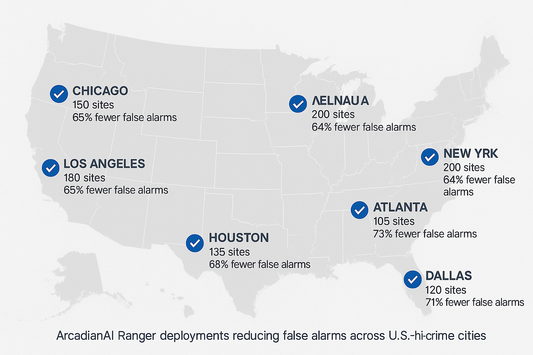AI Cameras Begin Ticketing Bus Lane Violators in Additional L.A. County Cities
A successful AI-powered bus lane enforcement program has officially expanded into two new cities with violators now facing the possibility of a nearly $300 fine for each citation. As of Tuesday, the program is active and a warning period is in effect for vehicles blocking LA Metro bus lanes and bus stops along North La Brea Avenue in West Hollywood, as well as violators who block Santa Monica’s Big Blue Bus lanes.

Story
A successful AI-powered bus lane enforcement program has officially expanded into two new cities with violators now facing the possibility of a nearly $300 fine for each citation.
As of Tuesday, the program is active and a warning period is in effect for vehicles blocking LA Metro bus lanes and bus stops along North La Brea Avenue in West Hollywood, as well as violators who block Santa Monica’s Big Blue Bus lanes.
A successful AI-powered bus lane enforcement program has officially expanded into two new cities with violators now facing the possibility of a nearly $300 fine for each citation.
As of Tuesday, the program is active and a warning period is in effect for vehicles blocking LA Metro bus lanes and bus stops along North La Brea Avenue in West Hollywood, as well as violators who block Santa Monica’s Big Blue Bus lanes.
The LA Metro system is part of a 5-year pilot program between the Los Angeles County Metropolitan Transportation Authority and tech company Hayden AI. The initial rollout features 100 camera systems on buses, which scan the license plates of parking offenders and sends that information to LADOT, which in turn uses a human to verify the information and issue a ticket via the mail.
LA Metro and the Los Angeles Department of Transportation agreed to a 75/25 split on the citation fees, which have been rolling in at historic rates since the system was launched.
So far, the system has proven to be lucrative, with nearly 10,000 tickets issued in the first two months of the program alone.
Santa Monica’s Big Blue Bus is also using the same enforcement technology, having participated in a 2023 pilot program with Hayden AI that resulted in nearly eight detected violations per bus per day, totalling more than 600 violations in just over 45 days.
According to the Santa Monica Daily Press, the Big Blue Bus system serves 13.3 million riders annually across its 58-square-mile service area.
Santa Monica is also offering a 60-day grace period for violators, but will begin issuing citations in line with West Hollywood on Sept. 2.
AI camera enforcement is being deployed across L.A. County in an effort to improve reliability of local buses and reduce delays. Dedicated bus lanes are among the gridlock solutions to crowded traffic corridors, but the benefits are significantly hampered when the lanes are blocked by vehicles.
“Santa Monica and West Hollywood are leading the way in adopting transformative technology to make public transportation safer and more reliable,” said Charley Territo, chief growth officer of Hayden AI. “Our bus-mounted camera platform is helping cities across Southern California eliminate obstacles to smoother bus operations.”
Culver City has launched its own camera-powered bus enforcement system with a similar fee structure as LA Metro. The 60-day warning period in Culver City ended in May.
LA Metro lines enrolled in the bus lane enforcement program includes the 212 which serves La Brea Avenue between Hawthorne and Hollywood, the 720, which serves Wilshire Boulevard from downtown L.A. to Santa Monica, the 910 and 950 on the J Line Bus Rapid Transit line, and the 70, which services Olive Street and Grand Avenue.

Security is like insurance—until you need it, you don’t think about it.
But when something goes wrong? Break-ins, theft, liability claims—suddenly, it’s all you think about.
ArcadianAI upgrades your security to the AI era—no new hardware, no sky-high costs, just smart protection that works.
→ Stop security incidents before they happen
→ Cut security costs without cutting corners
→ Run your business without the worry
Because the best security isn’t reactive—it’s proactive.






